Birds and birders flock to water treatment plants. My first experience with one was the sewage pond at Fort Bliss in El Paso, Texas. It was a green oasis in the otherwise arid desert, chock full of shorebirds. It smelled to high heaven!
This one has a modest name, Stormwater Treatment Area Number 5, STA-5 for short, managed by the South Florida Water Management District, and located south of Lake Okeechobee in no-man’s-land of Hendry County. In the middle of the sugar cane fields, STA-5 consists of four large shallow ponds that occupy an area of eight square miles. Audubon of Southwest Florida calls it one of the best birding spots in all of Florida.
Similar to domestic sewage settling ponds, STA-5 receives waste water and allows impurities to precipitate out and serve as food for millions and billions of trillions of microorganisms, algae and water plants. But unlike urban sewer plants, the source of the water is runoff from Florida’s generous summer rains, and the waste is agricultural effluent from the many farms upstream. Fertilizers, pesticides and herbicides dissolved in the runoff are captured and stored before purified water is released into the Everglades. Phosphorus is the main culprit. The Everglades are historically poor in nutrients, and phosphorus stimulates the growth of cattails that overrun the sawgrass that normally carpets the River of Grass.
Although remote and at the end of a mile-long unpaved road, it is rather easy to find, about twenty miles south of Clewiston on otherwise good paved roads. The drive down to to STA-5 is a destination in itself.
A Crested Caracara roosted atop a utility pole:
A large flock of Black-necked Stilts waded in the shallow water of the northeast pond:
One stilt appeared out of place as it rested alone on the shore:
American White Pelicans were everywhere: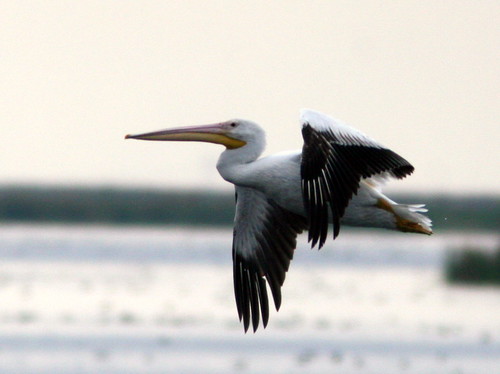
A compact group of Short-billed Dowitchers slept as one kept a wary eye on its surroundings: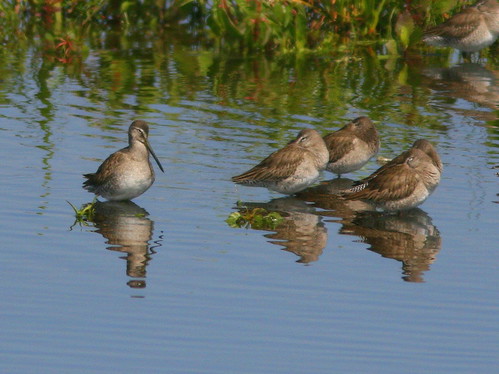
Another dowitcher foraged in the shoals:
A male Belted Kingfisher dove recklessly from its wire perch after a small fish: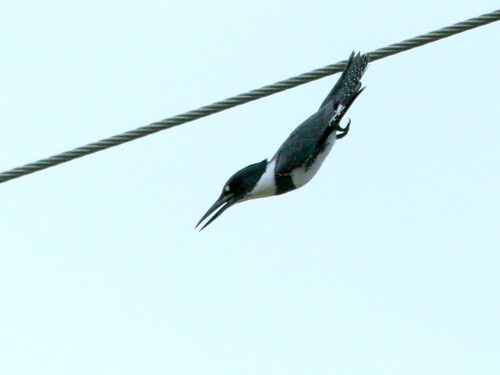
The kingfisher then hovered, hoping for another meal:
It stayed in one spot in the air, the better to see movement in the water below:
An American Bittern was almost invisible against the vegetation as it stood motionless among Snowy Egrets and a Glossy Ibis: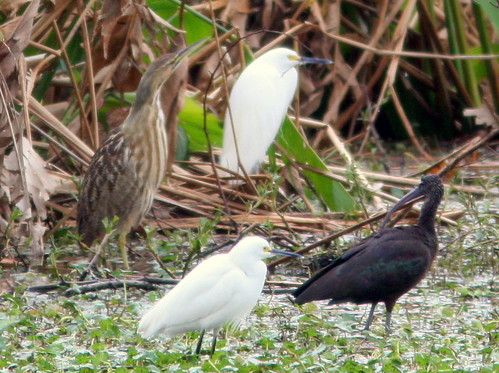
A Caspian Tern, with others of its kind in pursuit, held on to a fish:
An Anhinga dried its wings, surrounded by Common Moorhens and Blue-winged Teal:
A Roseate Spoonbill, one of many at STA-5, cast a colorful reflection:
Nearby, another spoonbill preened: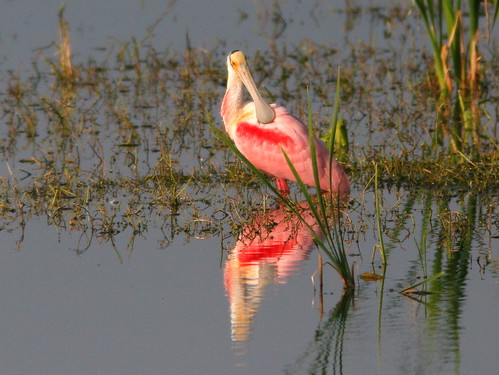
A flock of Fulvous Whistling-Ducks paddled by: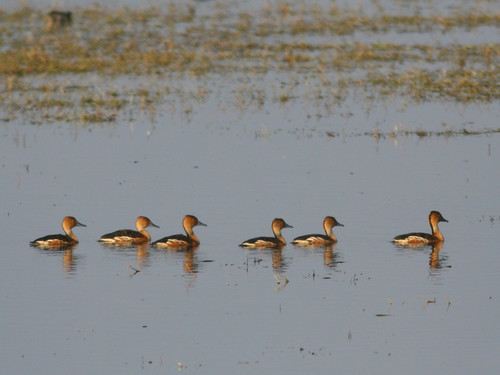
A Black-crowned Night-Heron flew over:
A Black Skimmer created a linear wake, its reflection so crisp that I had trouble telling which side of this photo belonged up: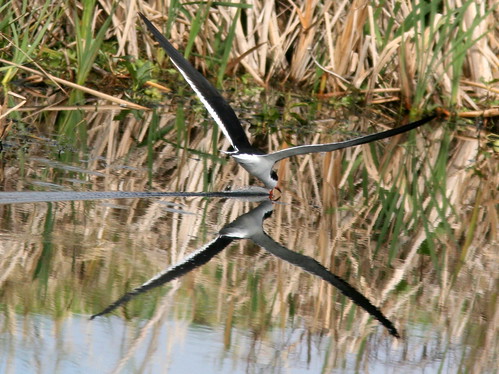
Another skimmer inscribed a curve in the water:
This skimmer displayed its unique bill in a fly-by:
This photo demonstrated the skimmer’s bill at work, close-up and personal: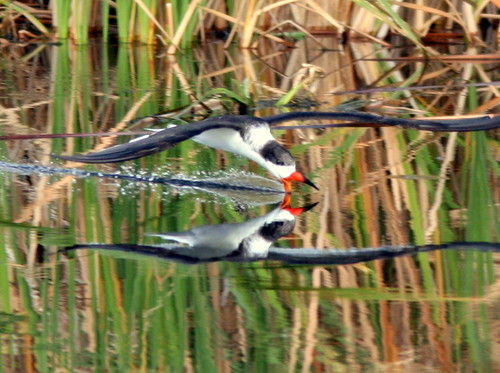
A male Snail Kite hunted for Apple Snails:
This is one of at least two pairs of Snail Kites that were present:
Two Cassin’s Kingbirds, vagrants from the Western US, so common in our New Mexico front yard, caused excitement:
A pair of Western Kingbirds, a species which wanders to Florida more commonly, provided a nice plumage comparison. Note the softer gray on its head and lack of contrast with the light chin: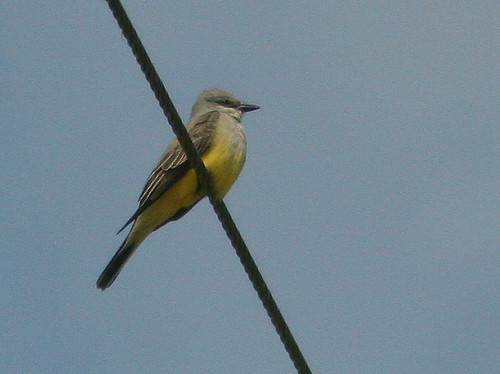













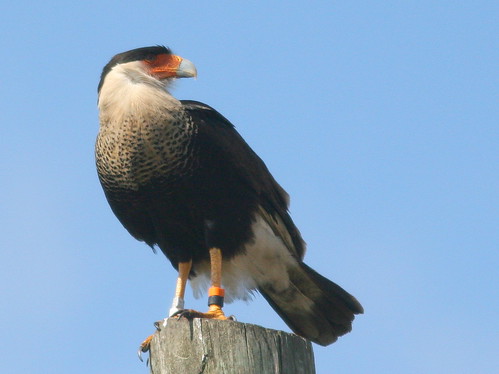
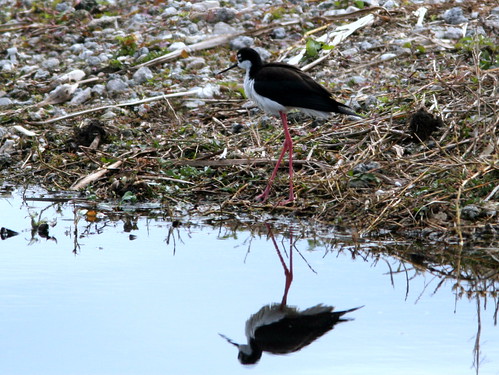

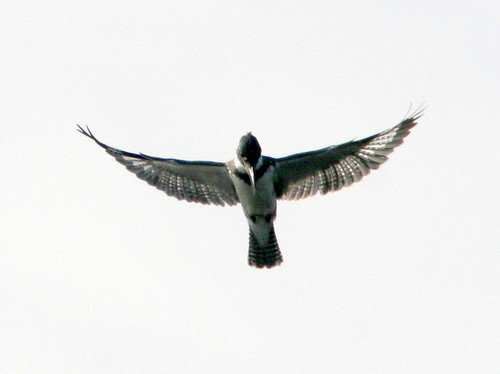
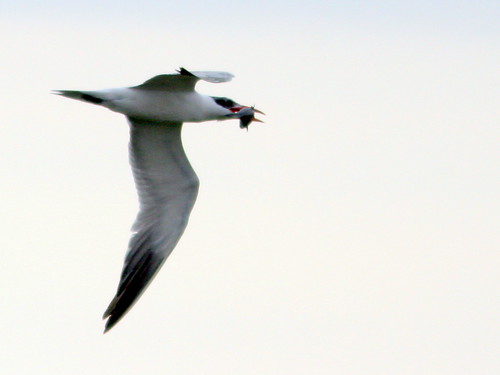
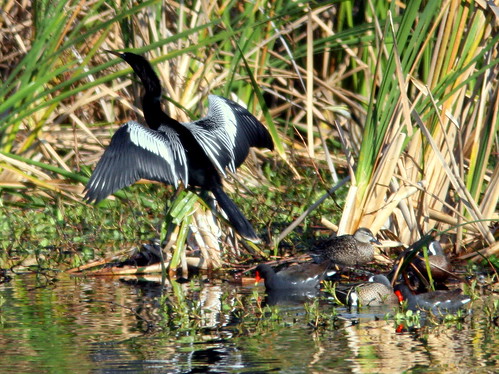
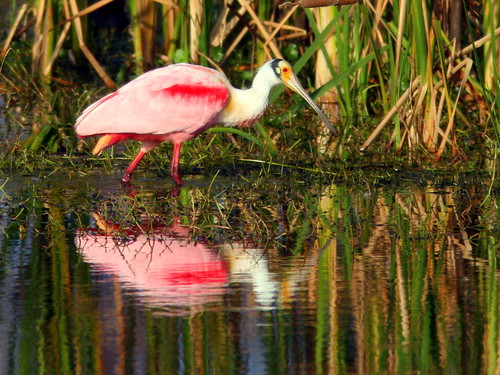
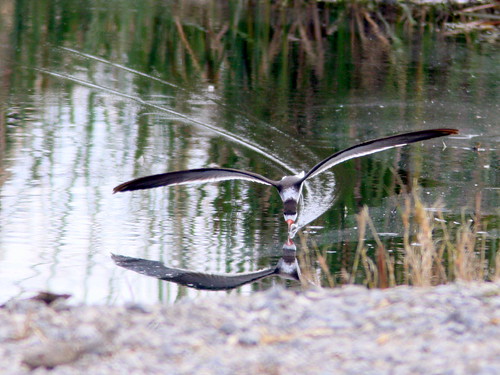
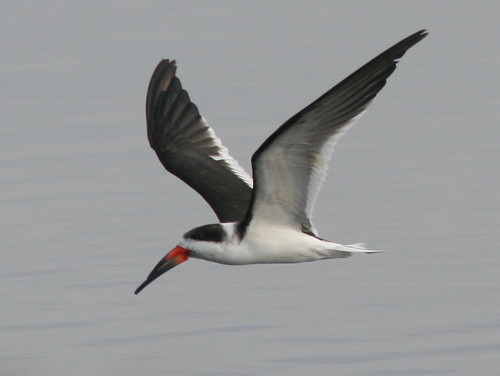


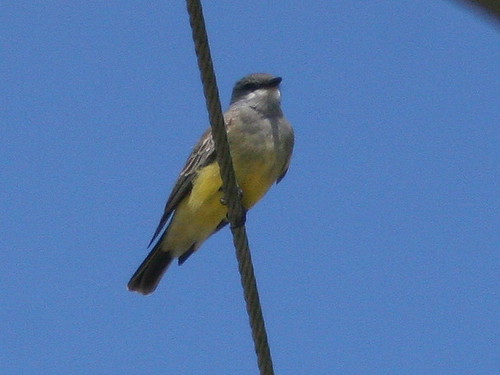
March 7th, 2010 at 9:14 am Sugar Farmers Cleaning Water Sugar Farmers Achieve Goals for Phosphorus Load Reductions for 2009
WEST PALM BEACH, Fla., March 5 /PRNewswire/ — The Everglades Agricultural Area (EAA) receives praise for its proven success in cleaning water south of Lake Okeechobee by two top state environmental agencies in their annual restoration report. The 2010 South Florida Environmental Report, published by the Florida Department of Environmental Protection http://www.dep.state.fl.us/secretary/news/2010/03/0302_02.htm and the South Florida Water Management District, reveals the EAA achieved a 68 percent reduction in phosphorus loads in 2009 and an overall 54 percent long-term reduction in phosphorus loading during its 14th straight year of meeting water quality goals. The target for reductions is 25 percent.
The farming area’s Best Management Practices (BMP) coupled with the 45,000 acres of Stormwater Treatment Areas (STA), which are constructed on former farmland, have prevented more than 3,200 metric tons of phosphorus from entering the Everglades Protection Area (EPA). Farmers south of Lake Okeechobee have contributed nearly $200 million in special agricultural property taxes to build the STAs. The success is even more impressive due to the circumstances that occurred in Water Year 2009. According to the Environmental Report, while the average phosphorus concentration decreased from 9.5 to 8.1 parts per billion in Everglades National Park, the phosphorus load into the EPA was 77 percent higher than the previous year, due to Tropical Storm Fay and other subsequent rains that occurred during severe drought. Despite rising phosphorus loads, the report credits the farming area, stating: “the reduced (phosphorus) inflow concentrations demonstrate the efficacy of BMP and STA nutrient removal.”
While the EAA south of Lake Okeechobee is regulated and must meet mandatory standards, the northern Lake Okeechobee watershed is not and revealed a much different story. According to the report, the average annual total phosphorus load to Lake Okeechobee from 2005 to 2009 was 572 metric tons, which is four times greater than the established standard for phosphorus entering the lake. “Sugar farmers in the agricultural region south of the lake have worked tirelessly and have invested millions of dollars in BMPs to achieve 14 straight years of more than doubling the target performance for water quality goals,” said Gaston Cantens, vice president of Florida Crystals. “We are proud of what we have accomplished. Nevertheless, at some point, we need help.
Each year, water flowing into Lake Okeechobee is increasingly phosphorus rich, and farmers to the south are burdened with the sole responsibility of cleaning the water and meeting stringent water quality standards, with little help from the rest of the state.” Florida Crystals applauds the Nature Conservancy and the federal government for their newly announced efforts to create water storage and treatment features north of the lake that could help filter phosphorus-laden water from central Florida before it reaches the lake. “It is critical that we quickly begin reducing phosphorus loads to Lake Okeechobee from the northern basins,” said Sam Poole, former executive director of the South Florida Water Management District. “The increasing concentration of phosphorus seriously threatens the health of the lake and is beginning to impact the effectiveness of the Stormwater Treatment Areas in preventing damaging levels of phosphorus from reaching the Everglades Protection Area.”
In view of these efforts for the Northern Everglades, as well as next week’s consideration of the U.S. Sugar contract extension, Florida Crystals is hopeful the South Florida Water Management District and the governor’s office will come to the same conclusion: Our valuable resources are better spent cleaning water north of the lake, instead of wasting taxpayer dollars acquiring more land to the south, which will not address the growing problem.
Contact: Gaston Cantens, VP Florida Crystals 561.366.5128
SOURCE Florida Crystals
March 11th, 2010 at 4:09 pm This is from Birders United, http://www.birdersunited.com/
Snail Kite Facing New Danger in South Florida
Posted on Mar 9th, 2010 |
The endangered snail kite is facing a new threat from an invasive species that is reducing the bird s main food source. The snail kite, which is found in central and southern Florida, feasts mainly on the apple snail. But the island apple snail, native to South America, has been introduced into the environment. The island apple snail is considerably bigger than the apple snail, making it difficult for young snail kites to feed on them. Thus, if the larger variety becomes dominant, young snail kites will starve.
University of Florida biologists estimate there are only 700 snail kites left in the wild. They predict that if nothing is done to curtail the spread of the larger island apple snail, the snail kite will become extinct within 30 years.
The invasive Island Apple Snail, Pomacea insularum, was detected in Everglades National Park back in 2005.
See: Apple Snail Fact Sheet.pdf